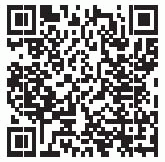Dystonic Tremor
OBJECTIVES
To review the clinical features of a patient with dystonic tremor.
To highlight the distinguishing features of dystonic tremor versus essential tremor and parkinsonian tremor.
To discuss the management of dystonic tremor.
VIGNETTE
This 69-year-old woman has noted “head shakes” for about 3 years. These were originally brought to her attention by her husband. She has remained largely unaware of the tremor. When questioned further, she also admits to tremor of her voice but not of her hands or feet. She felt her job performance at a school cafeteria was not compromised. She could carry big food trays
without any shaking. She was worried that she had developed a tremor like her mother’s at a younger age than she did (her mother, still alive in her early 90s, has a dystonic hand tremor).
without any shaking. She was worried that she had developed a tremor like her mother’s at a younger age than she did (her mother, still alive in her early 90s, has a dystonic hand tremor).
 |
Our patient had jerky tremor of the face, head (torticollis), and voice (adductor-type spasmodic dysphonia), consistent with segmental adult-onset dystonia. The etiology is likely genetic as her mother is also known to have dystonia (see second video). There was no clear spread into her arms and no hand dystonic tremor was noted (Fig. 54.1). The rest of the examination was normal.
A jerky, irregular, action-induced, position-sensitive (and sometimes task-specific) tremor defines dystonic tremor. Sometimes the dystonic phenomenology is in another body part (e.g., torticollis and hand tremor, a category also known as tremor associated with dystonia) (Fig. 54.2). The relative clumsy movements give the appearance of bradykinesia, but the lack of decrementing amplitude or speed (fatiguing) with rapid alternating movements, such as those elicited during the finger-tapping task, suggest the disorder is not within the category of parkinsonism.
Essential tremor (ET) is an overused diagnostic label. Anywhere from 40% to 50% of those diagnosed with essential tremor may actually have other conditions, most often dystonia (dystonic tremor, DYT) or Parkinson disease (PD) (Table 54.1). Although neither response to alcohol nor family history reliably distinguish ET from DYT, certain features may be more common in one compared to the other (Table 54.2). Still, some clinical features of ET, PD, and dystonic tremor overlap. For example, ET tremor can present unilaterally and at rest, becoming potentially misdiagnosed as PD, or with a jerky handwriting and be misdiagnosed as dystonic tremor. Dystonia, as the second most common source of “false ET,” tends to produce a tremor that, when in full bloom, should be very different from ET: asymmetric, dysrhythmic, irregular in amplitude and periodicity, directional (i.e., more overt in a given direction), and exacerbated by muscle contraction. Dystonia is easier to identify when the tremor appears or increases only on certain positions or tasks, when overt
posturing develops (e.g., “spooning” of the hands, i.e., wrist flexion with hyperextension of the fingers when arms are outstretched), and in the setting of clear sensory tricks (e.g., touching the more affected hand with the contralateral one to lessen the amplitude of the tremor). Isolated tremor in the legs, head, facial muscles, voice, jaw, or tongue is considered atypical for ET and most often indicative of parkinsonism or dystonia.
posturing develops (e.g., “spooning” of the hands, i.e., wrist flexion with hyperextension of the fingers when arms are outstretched), and in the setting of clear sensory tricks (e.g., touching the more affected hand with the contralateral one to lessen the amplitude of the tremor). Isolated tremor in the legs, head, facial muscles, voice, jaw, or tongue is considered atypical for ET and most often indicative of parkinsonism or dystonia.
Stay updated, free articles. Join our Telegram channel

Full access? Get Clinical Tree








